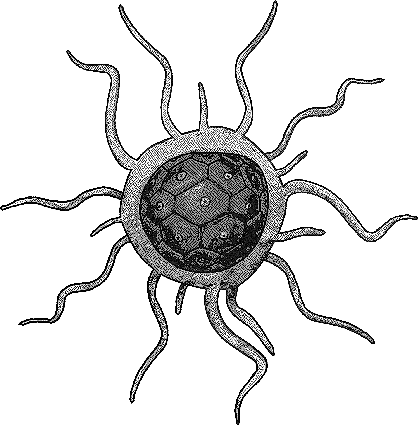lifespan
800 - 850 years
average height
40' - 60'
other names
bleeders, drunk's tree, (industrial) redwood
conservation status
least concern

The Bloodbubble tree is a tree named after the dense red sap that the tree emits when its bark is cut into. The tannins that give the sap its intense red color are a protective mechanism against insects like the tree-bugger that eat the sugar present in the sap.
It has a symbiotic relationship with sap mosses. Sap mosses cling to the bark and shares water with the tree's bark. Paired with sap yeast, it is a primary ingredient in flavored ethanols. This ethanol can be used for various purposes, but its most common use is in the creation of sap wine. Because of the tannins in the bark, the sap is very bitter and requires the use of sweeteners to be edible by people.
Its wide shallow roots allow it to stay firmly planted even in areas of very thick permafrost. It exists along the timber line and trees can be up to 850 years old.
Bloodbubbles are hardwood trees that vary in height usually between 40' and 50' with the largest recorded tree with a height of 61'. The bark is gray and smooth, but also thin enough that in some places the red sap can give the tree a pink appearance.
It has elliptical shaped leaves approximately 7 cm long and 2 cm wide that are rounded at both ends, light green, smooth, and have no visible veins.
Its flowers are bisexual, and the fruit is a yellow-green drupe about 2 cm long.
This tree is near ubiquitous across the tundra. Because of its abundance, it has played a large part in the cultures of the Veinhouses.
Besides the red sap that resembles sap, the tree earns its name from the red seeds that germinate while still attached to the parent. Once germinated, the seedling grows out through the fruit to form a propagule which can already produce its food via photosynthesis.
Young bloodbubble trees can take root in certain mosses, but require transplanation. The roots are shallow, but because they take a very large area, a small pocket of moss is not enough to sustain the tree and chokes the moss.
Bloodbubbles have been domesticated to yield more and sweeter sap. The sweeter the sap, however, the more likely it is to attract insects rather than repel them. As such, sweeter Bloodbubbles must be grown in greenhouses away from insects.
The trees have a symbiotic relationship with sap mosses. In exchange for protection against insects, the mosses keep the tree bark watered. As bloodbubbles have been domesticated, so have the mosses that grow on them.
The Bloodbubble tree has a thin flakey bark and dense wood that is red in color. It can be difficult to use as lumber, as other woods are more supple and attainable, but its color makes it unique and valuable as decoration. Because of its denseness, it is also durable.